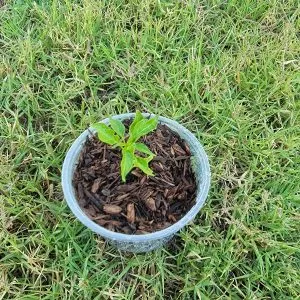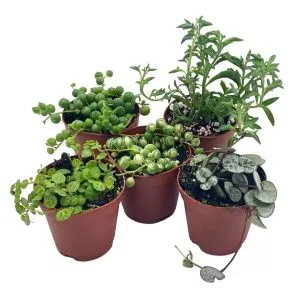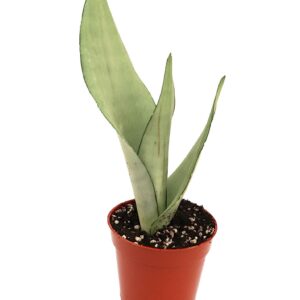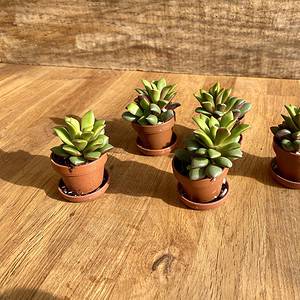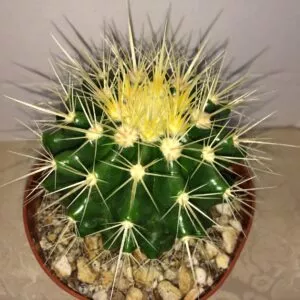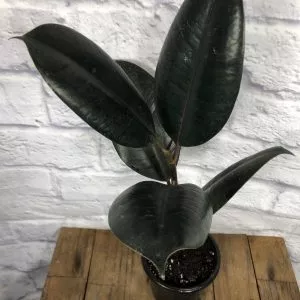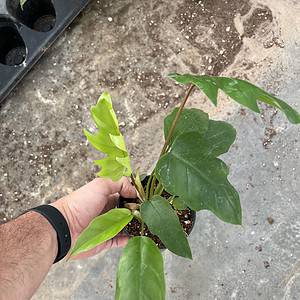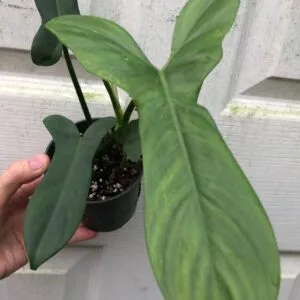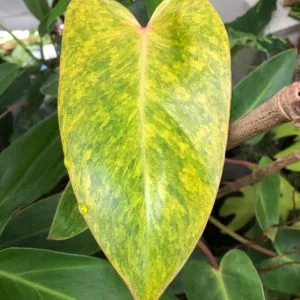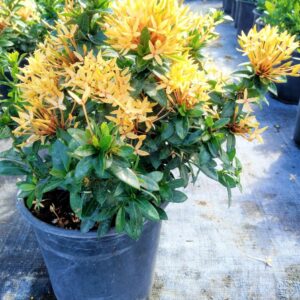No products in the cart.
Table of Contents
Some of the prettiest indoor plants are fern species, and one of them is the kangaroo paw fern. The main concern, though, is that they are finicky but still relatively adaptable.
So, if you have gotten your hands on one of these lush plants, we will help you care for it with its picky attitude. So, let’s get those fingers dirty.
What are Kangaroo Paw Ferns?
Are you a new plant parent? Then, ferns might not be on your list for caring. Sometimes you take extra care of the indoor growing plants, as they tend to die mysteriously.
But with all the fussiness, these plants add flair to any living space, pond, or floral arrangement. The kangaroo foot fern or paw fern native range is Australia grown. They are commonly planted in hanging baskets or outside for decorative purposes.
The foliage is shiny green, reaching one foot tall and four inches wide. Another highlight of this perennial plant is that it prefers humid conditions to dry air. Furthermore, they add color to any place when used for ornamental purposes.
Microsorum diversifolium Care
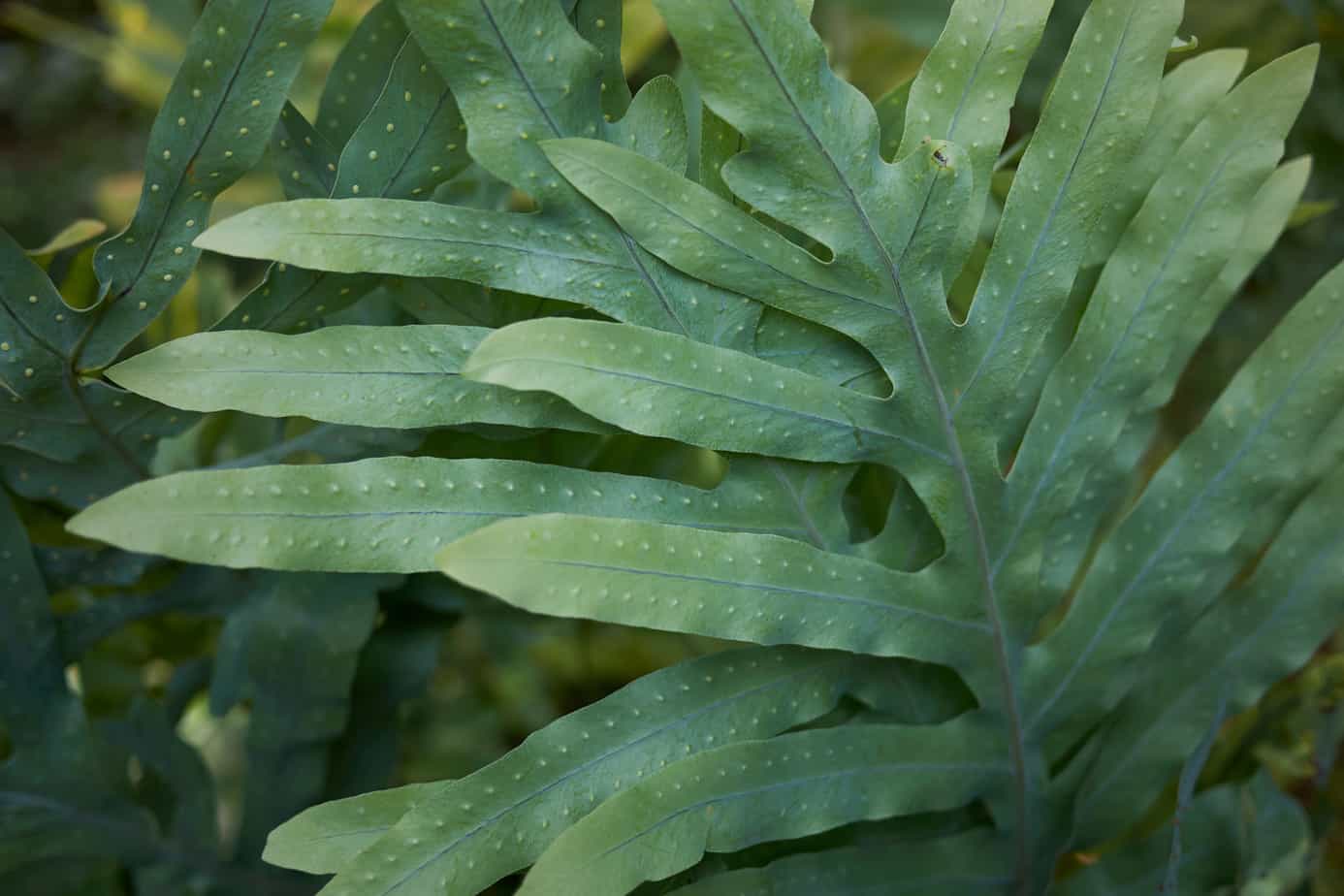
The botanical name Microsorum means small spored or sori you find on the underside of the fronds. In contrast, diversifolium refers to the different leaf forms of the plant. In honesty, the kangaroo fern is one spectacular species.
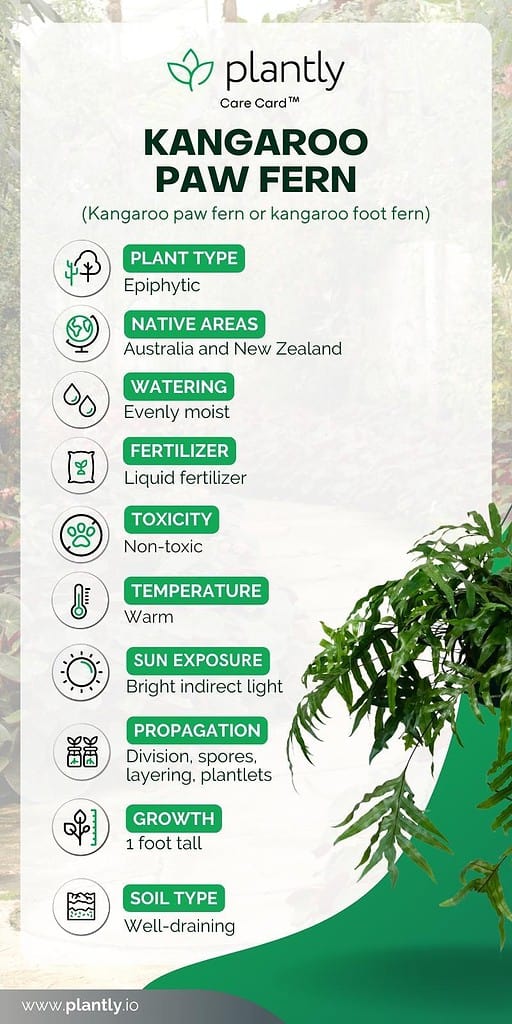
In stock In stock In stock In stock
Free Shipping
$20.00
Sold By:
Blessed Family Farm
Live Cayenne Pepper Plant
Rated 4.82 out of 5 based on 22 customer ratings03
Sold By:
Blessed Family Farm
$49.99
Sold By:
BubbleBlooms
Succulent Strings Set, Variegated String of Pearls, Turtles, Hearts, and Needles, premium collection, in 2 inch pots, plant gift
Only 99 available and it’s in 2 people’s basket Rated 4.81 out of 5 based on 279 customer ratings01
Sold By:
BubbleBlooms
$18.00
Sold By:
PotHedz Plants
Sansevieria moonshine
Only 1 available and it’s in 3 people’s basket Rated 4.96 out of 5 based on 106 customer ratings00
Sold By:
PotHedz Plants
$6.00
Sold By:
Smoot's Farm
Rainbow Sand Rose or Anacampseros Rufescens Variegata 1″ Pot Live
Rated 4.89 out of 5 based on 27 customer ratings00
Sold By:
Smoot's Farm
Best Potting Mix
Okay, Anigozanthos aka kangaroo paw fern thrive in a well-draining and moist soil surface filled with organic matter. Think of pine straw mulch, sphagnum moss, compost, orchid bark, or perlite as they’re the best components of its growing medium.
Potting soil mixed with any of these ingredients provide an airy living space. The crucial thing is moisture retention and adding coco coir helps.
Your kangaroo paw fern does not like soggy soil as it can lead to root concerns, so make sure the water drains freely.
Ideal Lighting
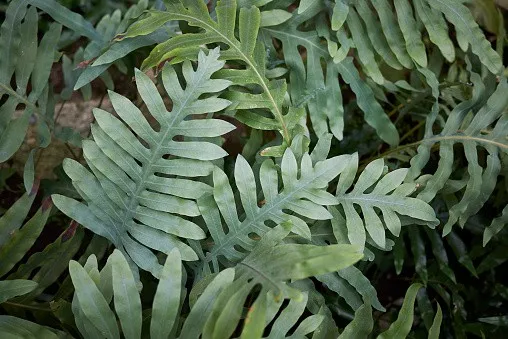
Most ferns flourish in brighter light but can tolerate lower light. While softer light will not kill your fern, it will leave it with stunted growth.
Hence, if you see that your plant is not growing well, it needs more sunlight. You can choose a semi-shaded spot that does not have direct sunlight for the best growing results.
When grown as an outdoor plant, make sure to provide the correct soil moisture in a spot with partial shade.
Watering Needs
For watering your fern plant, we recommend distilled water to avoid the adverse effects of chemicals present in tap water. The essential factor is consistent moisture without drowning the plant.
Another crucial thing is not to water the crown. The telltale sign that your kangaroo desperately needs a drink is when the foliage droop. Fern species love to drink water, and yes, they do not love too much sunlight.
In stock In stock Only 1 left in stock In stock
$35.99
Sold By:
Carlo's Plant Farm
2 JASMINE DOWNY – LIVE STARTER PLANTS LESS THAN 12 INCHES TALL
Rated 5.00 out of 5 based on 22 customer ratings00
Sold By:
Carlo's Plant Farm
$8.99 – $55.99
Sold By:
Succulent Oasis
Golden Barrel Cactus or Echinocactus Grusonii Cactus
Rated 4.84 out of 5 based on 352 customer ratings01
Sold By:
Succulent Oasis
Free Shipping
$10.00
Sold By:
Bay Urban Habitat
Jelly bean sedum 1 inch cutting
Sold By:
Bay Urban Habitat
$16.95
Sold By:
SunSoul Plants
$21.95Ficus Elastica ‘Burgundy’ in 4″ pot
Rated 4.87 out of 5 based on 98 customer ratings06
Sold By:
SunSoul Plants
Temperature & Humidity Conditions
Your plant will love you if you provide it with warm temperatures ranging from 70° F to 75° F ( 21°C to 24°C). When temperatures drop below or go too high, it causes issues with your evergreen plant.
Yes, we know growing your fern indoors is challenging as you need to provide it with the proper humidity. Remember these species are accustomed to growing in shady areas with lots of moisture around.
But the astonishing thing with the fern is that while they love humidity, they can survive in dry air.
Just don’t expose it to drought conditions.
Fertilizer Needs for Paw Fern
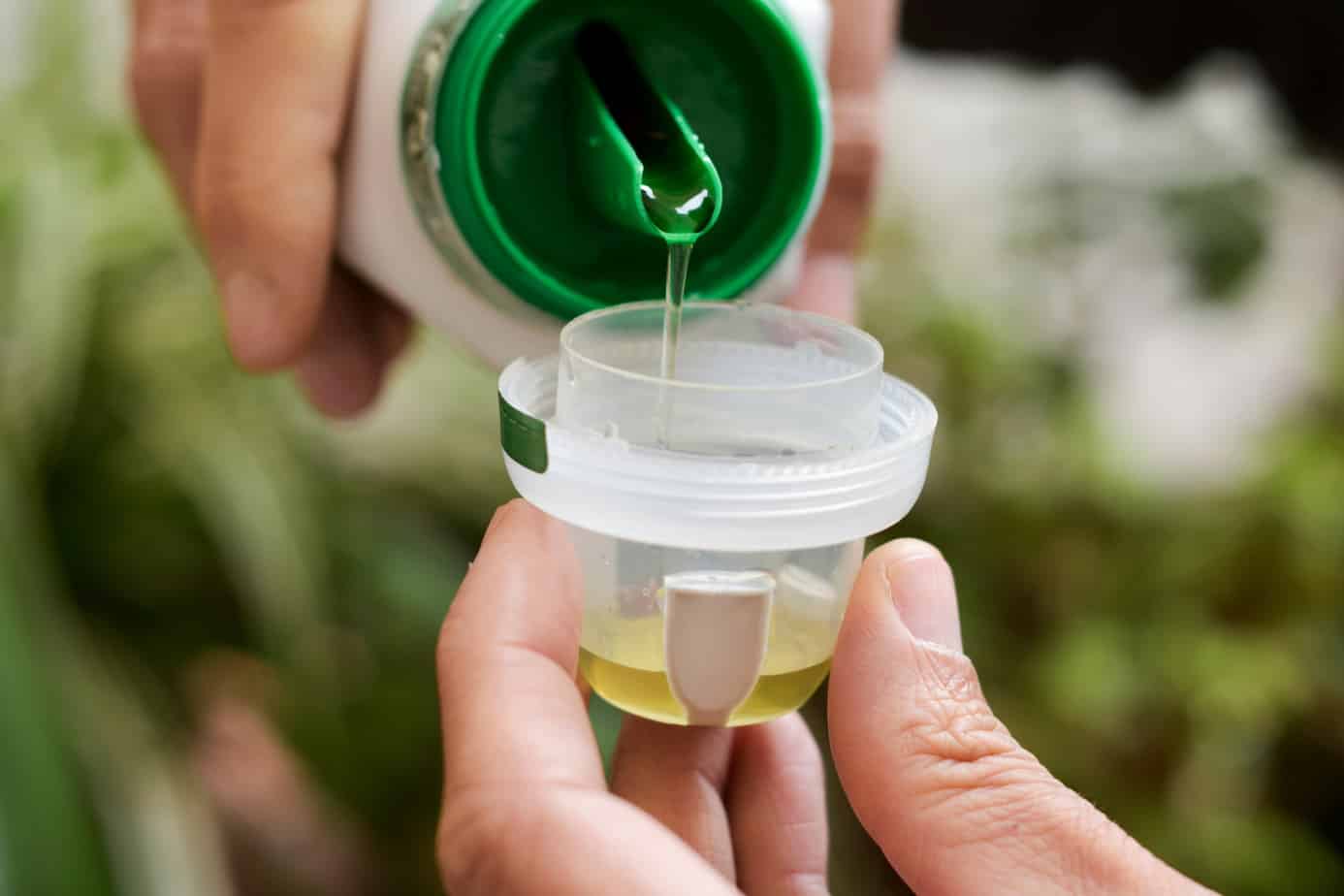
In order for ferns to flourish, they need a well-balanced yet slow-release fertilizer in spring when new growth begins.
You may opt in using a liquid feed or a slow-release granulated fertilizer 14-14-14 about a teaspoon per four square feet of soil surface.
Once spread, water them well and reapply after three months. But remember, the paw fern can burn quickly, so do not overdo it.
Propagation
The fantastic news is that you can propagate your kangaroo paw fern using spores or through rhizome division. However, spore reproduction takes long up to a year. Here is a guide for both of these methods.
Spore Propagation

- Clean your sharp knife or scissors.
- On the underside of the fonds, you will find the spores with a brown color, and if green, leave them be.
- Cut the stems with fronds making a clean cut.
- Place the cuttings in an envelope and leave them for a week to dry.
- When the spores are dry clean them with a damp cloth but remember they are tiny.
- Take a see-through container with a lid and use the proper nutrient-balance potting medium. Distribute the spores on top of the ground.
- Place some vermiculite to retain moisture over it.
- Water lightly by misting the ground using distilled water and closing the container. The spores should remain moist with the sealed lid without watering them again.
- Store the vessel in a well-lit room that is warm for a few weeks. You will notice a green disc forming on the soil showing the propagation is a success.
- Open the container for a bit and mist if needed allowing your fern to adjust to the environment.
- Once your fern grows more prominent with new roots, you can transplant it in the same medium in a bigger pot.
Rhizome Division Using Peat Moss
- Start by exposing the tubers of the kangaroo paw fern
- Take a sterile knife to divide them in half, or if it is a mature plant, you can divide them into more parts
- Each section should have fronds on it and place each portion in separate containers using a suitable potting soil mixed with peat moss
- Water regularly as you would with your other fern houseplants
An important note is to avoid fertilizing your fern until a year passes.
Growth Zone

You can grow kangaroo paw ferns in locations under USDA zones 10 to 11.
Potting Kangaroo Paw Fern
Repot your kangaroo paw fern every other year when it starts to outgrow the pot. It is best done in spring. It is also the best time to divide the rhizomes.
Always remember that you should avoid fertilizing your fern after transplanting.
Kangaroo Paw Fern Varieties
Microsorum pustulatum kangaroo fern
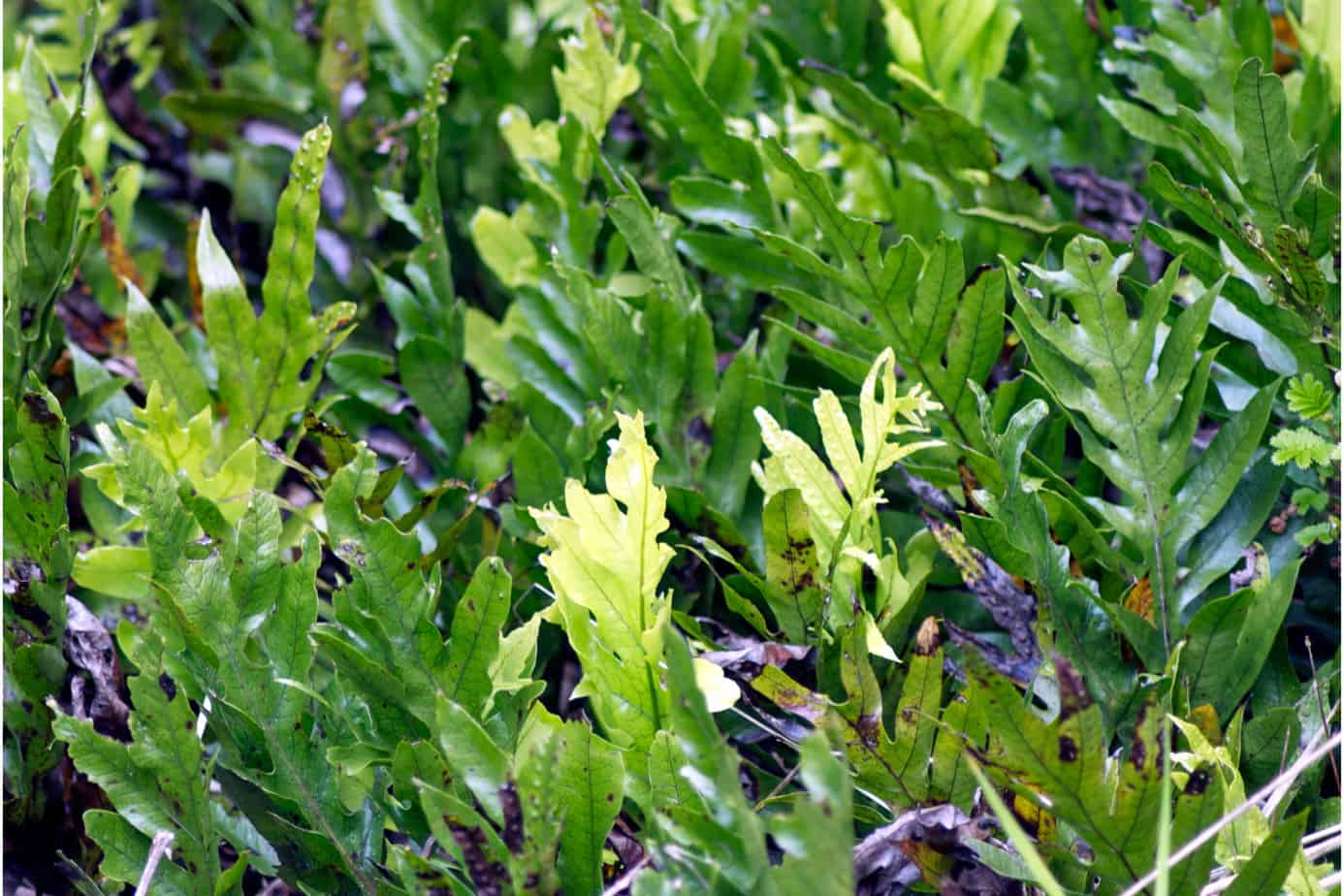
The fern has the exact resemblance to the kangaroo paw fern’s color which is glossy green. Another name it goes by is the hound tongue.
Adiantum capillus-veneris
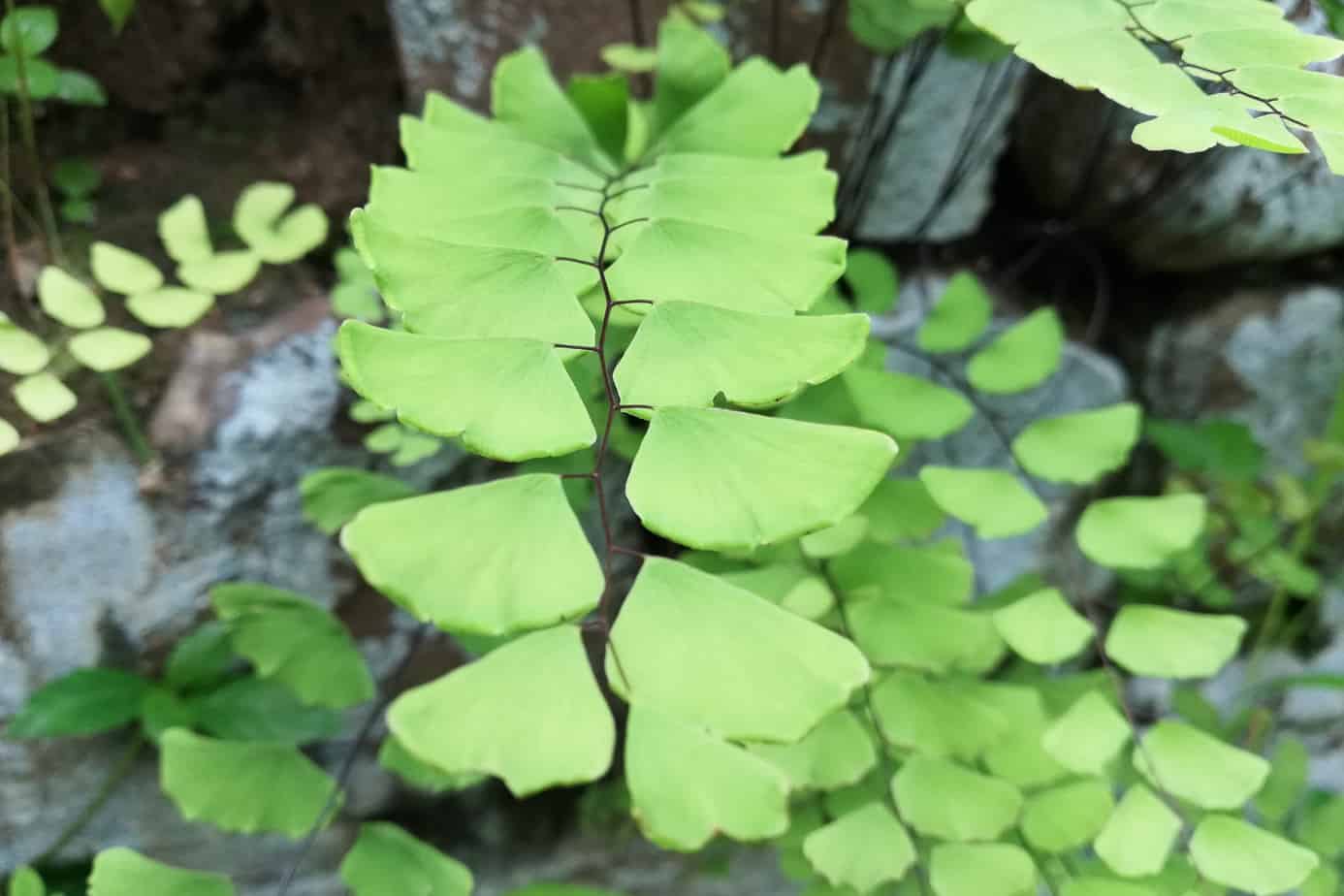
The southern maidenhair fern has a delicate leaf shape and is excellent for growing in the backyard. It grows clumpy with an arching pattern spreading through rhizomes.
Asplenium nidus

Bird’s-nest Fern makes for a great houseplant with its epiphytic growth with fonds extending from the center like the sun’s rays.
Kangaroo Paw Fern Diseases & Pests
For the best kangaroo paw fern care, you can keep an eye on the following concerns:
- Droopy fronds can happen when the air is too dry and the plant needs more humidity. You may use a pebble tray or humidifier.
- Fronds falling off and turning yellow color is a sign of underwatering. But a yellow tint can also mean your plant is getting too hot or cold.
- Mushy roots that look black result from overwatering but can be from fungal diseases.
- Dark or green dots on the underside of fronds is typical, and the spores you see help with reproduction.
- Pests that can infest your fern are aphids or slugs.
Frequently Asked Questions
The main health benefit of the kangaroo paw fern is that it is an air-purifying plant. Hence, it will improve the air quality in your home especially when there are harmful gases around.
The kangaroo paw fern has no poisonous properties. If pets do nibble on it, they will bring the foliage out as they do with grass.
We do not recommend misting your kangaroo paw fern as it can result in leaf mold.
The plant prefers growing in tree crotches in its natural habitat and prefers a shady area with indirect light compared to direct sunlight.
The species prefer moist soil but not soggy and are drought-tolerant for short periods. The best is to way until the soil surface is dry before watering.
When your plant droops, it needs extra water, and grown as an outdoor plant, it helps to provide a light layer of mulch to help retain moisture.
Whether you want to buy, sell, or simply reach out to other plant enthusiasts, Plantly is the right place to be!
In stock In stock Only 1 left in stock (can be backordered)
$22.95
Sold By:
SunSoul Plants
$49.95Philodendron Bipennifolium ‘Horsehead’ Plant in 4″ pot
Only 1 available and it’s in 1 people’s basket Rated 4.87 out of 5 based on 98 customer ratings01
Sold By:
SunSoul Plants
$25.95
Sold By:
SunSoul Plants
$49.95Philodendron ‘Painted Lady’ Plant in 4″ pot
Only 1 available and it’s in 1 people’s basket Rated 4.87 out of 5 based on 98 customer ratings00
Sold By:
SunSoul Plants
Free Shipping
$24.99
Sold By:
Gar-Zen Botanical Design
Ixora Dwarf Yellow Blooming Ships Free.
Rated 4.86 out of 5 based on 49 customer ratings00
Sold By:
Gar-Zen Botanical Design
